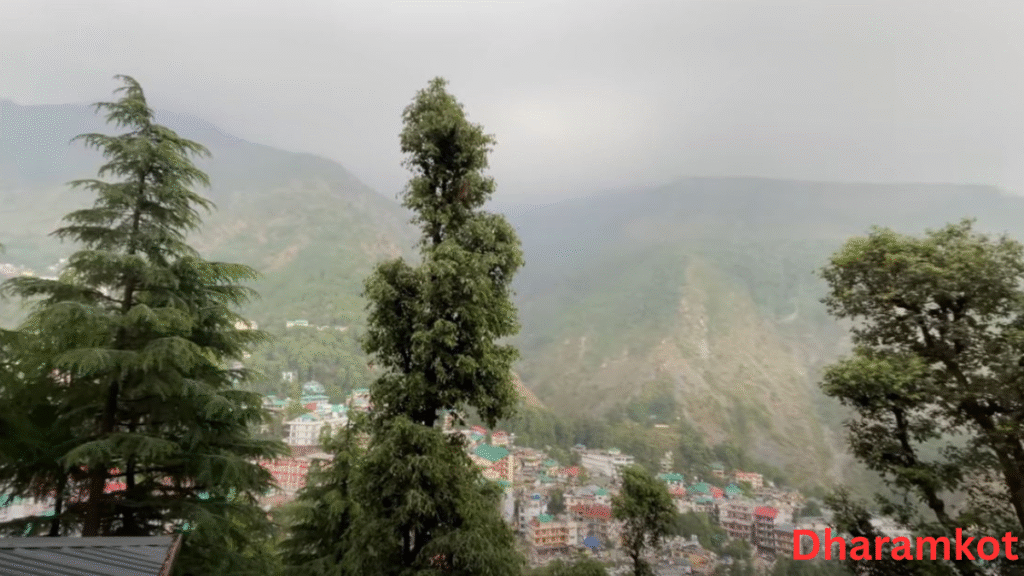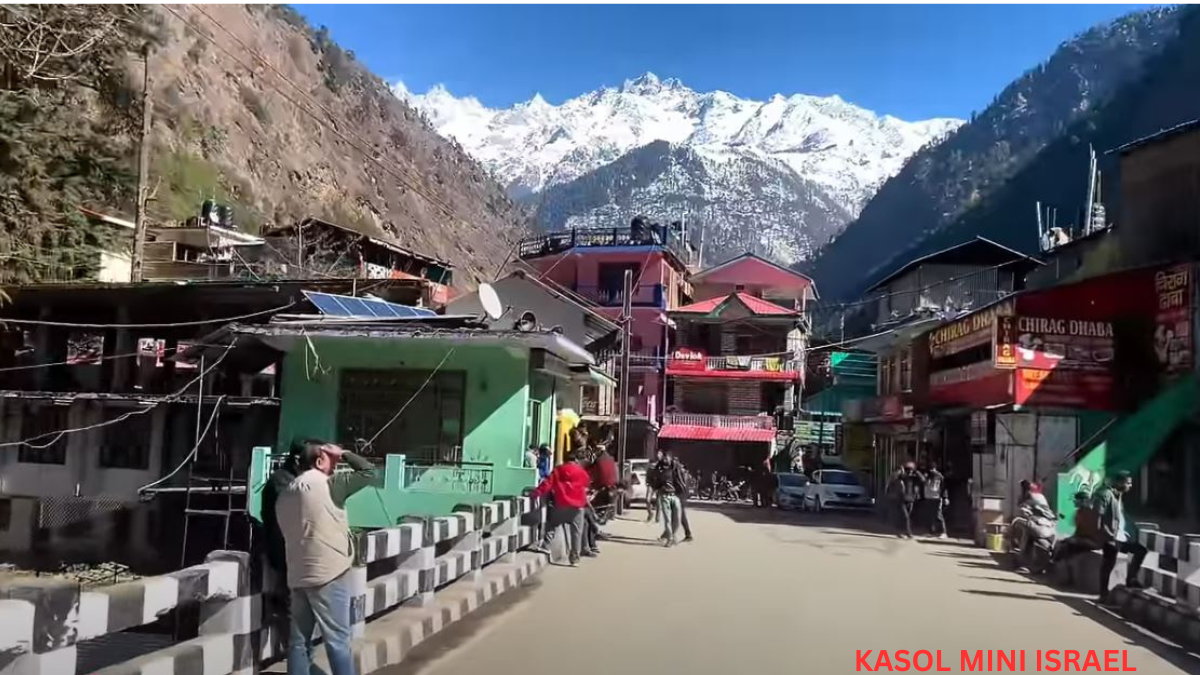Nestled in the serene landscapes of Himachal Pradesh, the villages of Kasol(The Mini Israel)and Dharamkot have become unexpected havens for Israeli travelers over the past three decades. Often referred to as Mini Israel and the “Tel Aviv of the Hills,” respectively, these hamlets offer a unique blend of Indian and Israeli cultures, creating a distinctive atmosphere that attracts visitors from around the world.
Kasol: The Mini Israel of Himachal Pradesh
Situated in the Kullu district along the banks of the Parvati River, Kasol has long been a favorite among Israeli backpackers. The village’s natural beauty, reminiscent of certain Israeli landscapes, coupled with its welcoming environment, has led to a significant Israeli presence in the area.Kaso(Mini Israel) is a lovely paradise in Parvati Valley, which attracts a lot of guests from all around the world each year. Deep, dense forests, roaring Parvati river in between massive huge mountains, stunning bridges with some uber cool cafes and great views. People choose this location again and again as it has everything which each and every traveller craves for. Kasol offers you an outing of a lifetime. It is stated that Parvati river is one of the fastest flowing rivers in India, it was beautiful and dangerous at the same time.
Places to Visit in Kasol
Parvati River: The river flows gracefully through Kasol, providing picturesque spots for relaxation, picnics, and photography. The soothing sound of the water adds to the tranquil vibe of the village. Manikaran Sahib: Located just 4 km from Kasol (Mini Israel), this revered Sikh gurudwara is known for its hot springs and religious significance. Visitors often enjoy langar (free community meals) served at the shrine.
Chalal Village: A short trek from Kasol, Chalal is a quaint village known for its rustic charm, homestays, and beautiful trails. It’s also a hotspot for rave parties and cultural gatherings.
Tosh Village: A scenic drive or trek away, Tosh is a picturesque hamlet offering stunning views of the Himalayas, charming wooden houses, and a peaceful escape from the crowds.
Kheerganga: One of the most popular trekking destinations near Kasol, Kheerganga is famous for its hot water springs, mesmerizing views, and spiritual significance.
Malana Village: Known as the “Village of Taboos,” Malana is a historic and culturally unique village near Kasol. It’s famous for its distinct customs, scenic beauty, and trekking trails.
Adventure Activities in Kasol
Kasol(The Mini Israel) is a hub for outdoor enthusiasts and offers a variety of thrilling activities:
Trekking: Embark on treks to Kheerganga, Tosh, Chalal, and Malana for breathtaking views and immersive experiences in nature.
Camping: Set up camp along the Parvati River or in nearby meadows under a starlit sky.
Fishing: Enjoy trout fishing in the Parvati River, a relaxing activity amidst serene surroundings.
Exploring Cafes: Wander through Kasol’s famous cafes that serve delectable Israeli and local cuisine while offering cozy, artistic vibes.
Where to Stay in Kasol
Kasol(Mini Israel) offers a range of accommodations catering to all budgets. Backpackers can choose from affordable hostels and riverside camps, while travelers looking for comfort can opt for cozy cottages and boutique guesthouses. Popular options include:
– Riverside campsites for a close-to-nature experience.
– Homestays in Chalal and Tosh for authentic local hospitality.
– Boutique hotels with mountain and river views.
What to Eat in Kasol
The Mini Israel is a culinary paradise, especially for those eager to try Israeli and local Himachali dishes. Must-try items include:
Shakshuka: A delicious Israeli breakfast dish made with poached eggs, tomatoes, and spices.
Hummus and Falafel: Available at numerous cafes, these Mediterranean staples are a must-try.
Thukpa: A comforting Tibetan noodle soup perfect for chilly evenings.
Siddu: A Himachali steamed bread with savory fillings.
Apple Pie: A local dessert that pairs well with mountain-grown coffee.
Best Time to Visit Kasol
The best time to visit Mini Israel depends on your preferences:
Summer (March to June): Ideal for trekking, camping, and enjoying pleasant weather.
Monsoon (July to September): The valley becomes lush and vibrant, but landslides may hinder travel plans.
Autumn (October to November): Crisp air and clear skies make this an excellent time for outdoor activities.
Winter (December to February): A snowy wonderland perfect for those who enjoy cold weather and offbeat exploration.
Road Conditions to Kasol
Kasol is accessible via road from Bhuntar (31 km away) or Manali (75 km away). Roads are generally well-maintained, though monsoon and winter seasons may pose challenges due to landslides or snow.
Internet Connectivity in Kasol
While Kasol offers decent internet connectivity in cafes and accommodations, mobile network signals can be intermittent, especially in remote villages like Chalal and Tosh. Visitors are advised to download maps or carry offline tools for trekking routes.
Key Tips for Traveling to Kasol
– Respect local customs, especially in villages like Malana, where unique traditions are followed.
– Carry cash, as ATMs are limited and not all shops accept cards or digital payments.
– Be mindful of the environment and avoid littering, particularly on trekking trails and near the Parvati River.
Cultural Fusion and Community
Kasol’s charm lies not only in its picturesque surroundings but also in the cultural fusion it embodies. Israeli tourists, particularly young travelers fresh from military service, often form close-knit communities within the village. They immerse themselves in local customs while maintaining their own traditions, leading to a harmonious blend of cultures.
Chabad Houses and Israeli Influence
A notable feature of Kasol is the presence of a Chabad House, serving as a Jewish community center and gathering place for Israeli visitors. This establishment fosters a sense of community and provides a familiar setting away from home. The integration of Hebrew signage, fluent Hebrew speakers among locals, and establishments serving Israeli cuisine further emphasize the deep-rooted Israeli presence in the region.
Dharamkot: The Tel Aviv of the Hills

Just a short distance from the bustling town of Dharamsala lies Dharamkot, a village that has transformed into a magnet for Israeli tourists seeking tranquility amidst the Himalayan splendor.
Evolution of Dharamkot’s Landscape
Originally inhabited by the Gaddi shepherd community, Dharamkot has undergone significant changes with the steady influx of Israeli tourists. The village now boasts vibrant cafes, yoga centers, and gift shops catering to the preferences of Israeli visitors. Fluent Hebrew speakers and Hebrew signage are common sights, reflecting the seamless integration of the two cultures.
Economic Contributions
The Israeli influence has significantly impacted the local economy. The hospitality sector has witnessed a boost in employment opportunities, with restaurants offering Israeli cuisine and tailored services for Israeli visitors. This economic upliftment has fostered a sense of comfort and belonging, encouraging frequent visits to the region.
Challenges and Considerations
While the Israeli connection has brought economic benefits to Kasol(Mini Israel) and Dharamkot, it also presents certain challenges.
- Impact on Local Culture: The influx of tourists can lead to a dilution of local traditions and customs.
- Environmental Concerns: Increased tourism can strain natural resources and lead to environmental degradation if not managed sustainably.
- Cultural Sensitivity: Ensuring that the cultural exchange remains respectful and mutually beneficial is crucial for maintaining harmony between locals and visitors.
Conclusion
Kasol and Dharamkot stand as testaments to the enriching possibilities of cultural exchange. The unique blend of Indian and Israeli cultures in these Himalayan villages offers a compelling narrative of community, adaptation, and mutual respect. As these villages continue to evolve, it remains essential to balance tourism with sustainable practices and cultural preservation to ensure that the harmony between locals and visitors endures for generations to come.
